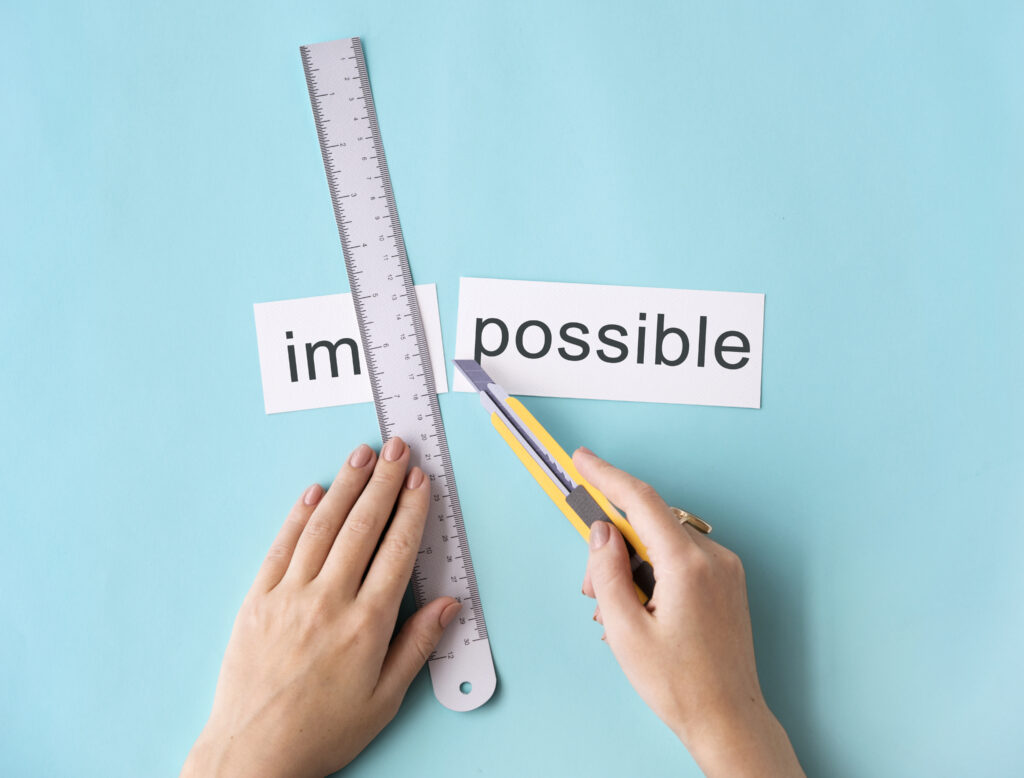

Learning a new language is an exciting journey, but it’s not without its challenges. Whether you’re aiming to master Dutch for work, travel, or personal growth, finding the most effective strategies and staying motivated are key to your success. In this blog on the best ways to learn Dutch, we’ll take a look at:
‘Do your best and it will all work out’. They’re comforting words to hear, but not always true. Why? Because learning a language is not just about effort. Efficiency (using the most practical, clever and fast ways to learn) and effectiveness (being goal-oriented) are just as important. Science offers us fascinating insights into how the brain works and how we can use these findings to optimize our daily language practice. In other words: learn smarter, not harder. Ready? Let’s find out about the smartest strategies!
Contrary to the common idea that you can learn Dutch fast simply by cramming information, learning is all about processing and making that information accessible when needed. Repetition plays a key role here. Daily language practice, or multiple brief study sessions work better than occasional, intensive studying. After all, you need to be able to store information properly each time before you can build on it next time.
You’ll probably recognize this scenario: you’re in the shower massaging shampoo into your hair and suddenly you get an amazing insight. You find the solution to the problem that has been bothering you for days or suddenly remember where you’d put away that important paperwork. Sometimes you could almost call it a eureka moment. Bizarre that this happens to you during a random moment like your evening shower? Not exactly! This happens because during periods of rest, certain brain regions that link new information to pre-existing knowledge become active. This is exactly why studying more frequently for short periods of time works better than cramming once.

And that brings us to the first of the surprising Dutch language learning tips we have for you in this blog, because your brain also does this while you are in dreamland. Learning in your sleep may sound strange, but you need sleep to process the information you’ve learned. Studies even show that practicing right before bed or taking a power nap can enhance memory retention. These moments are a great opportunity for your brain to consolidate information, helping you store what you’ve learned. See? There’s no need to learn harder when you know what the smartest ways to learn are.
Try reviewing vocabulary or grammar just before bedtime to make the most of your brain’s natural storage processes.
The environment where you study has a significant impact on your ability to retrieve information. The ‘context effect’ is a phenomenon that suggests that retrieving information is easier when the context is comparable to the context in which the information was learned. Most students would agree that a calm, distraction-free space enhances their learning outcomes. However, varying your study environments can help reduce dependency on context, making it easier to recall information in different settings, like during an exam or in real-life conversations.
Rotate between study spaces, such as a quiet room, a library, and even a café, to train your brain for flexible recall. And are you specifically preparing for an exam? If so, try studying in a crowded space now and then, one that mimics the venue in which you will take your exam.
One common struggle in language learning is processing large amounts of text or audio. The Cornell Method is a proven note-taking technique that can help. It involves dividing your notes into keywords, supporting details, and summaries. By organizing information this way, you improve comprehension and retention. This is especially useful when you need to apply that information flexibly in new situations or want to review your notes easily.
When listening to a Dutch podcast or reading a text, jot down main ideas and key vocabulary. Review these notes regularly to deepen your understanding.
Flow is a state of deep focus and enjoyment, where you lose track of time while working on a challenging yet achievable task. You achieve this state by finding the right balance between something new and something you already know. In other words, when you get to work on learning something that challenges you, but in a manageable way. Setting realistic goals, creating an optimal study environment, and using effective strategies can help you reach a state of flow, leading to better performance and long-term satisfaction.
Break your learning into smaller, manageable chunks to maintain focus and avoid feeling overwhelmed.

Research shows that a language tutor also plays an important role in achieving flow. To achieve flow with your tutor, besides their professional qualities, the chemistry between you and your tutor is also of great importance. To ensure that, we never simply match our new students with any tutor who happens to be available. Are you considering taking lessons with us? We always start with an intake interview, based on which we will look for a suitable tutor for you. Only after the trial lesson with that tutor will you decide whether you want to start. Feel free to contact us to let us know what your needs are or sign up for a discounted trial lesson.
At some point in your language learning journey, you may feel stuck, like you’re not making progress. This is called a learning plateau, and while it’s a natural part of the process, it can be frustrating and makes it difficult to stay motivated to learn Dutch.
Most students want to learn Dutch fast. But progressing in Dutch is not always a linear journey. Sometimes, it happens beneath the surface, much like the roots of a plant growing underground. You can get quite frustrated by this, because if you make an effort to learn something, you’ll most likely want to see the results of it as soon as possible. During plateau periods like these, it’s important to focus on long-term goals and trust the process. Remember that ‘ah-ha! moment’ in the shower? It proves that your brain is always busy, without you being aware of it. That means, you didn’t stop making progress, but you stopped making visible progress for a short period of time.
📣 Spoiler alert: everyone will face a language learning plateau sooner or later. Although it can occur at any stage, it happens more and more as you progress in Dutch. When reaching an intermediate level, learning naturally slows down. The curve will simply not be as steep as in the beginning. Don’t let that get you down. Instead, try to look at it in a positive way: most of what you need to learn, you have already learned.
The good news is that a language learning plateau is never here to stay. The key to overcoming one is consistency and patience. With the right mindset and strategies, this phase will pass, and you’ll be back to making visible progress in no time.
Keep a journal to track milestones and accomplishments, even small ones. This will remind you of how far you’ve come. A good exercise that can help you with this is a journal exercise: write down three sentences every day. This way you consolidate your knowledge and you can see what progress you are making over time.
When progress slows down, it’s tempting to stick with what you already know. Many students who dutifully keep reaching for their books turn to repetition. While this makes them feel they’re working on the language, it often leads to stagnation. First, they’re not learning anything new, and second, this makes study sessions very boring. That makes ‘don’t repeat unless necessary’ one of the most underestimated (Dutch) language learning tips. Instead of repeating existing knowledge, challenge yourself by tackling new vocabulary, grammar, or real-life conversations. A tutor can also provide personalized guidance to keep you moving forward.
💡Note: we are not saying that repetition is never a good idea. Of course it’s smart to repeat material when you no longer have certain knowledge at hand. However, repetition cannot be a solution to get out of a language learning plateau and it definitely won’t help you to learn Dutch fast. On the contrary, your learning curve will only become less steep that way.
Schedule a session with a language partner or tutor to practice speaking about unfamiliar topics. A tutor can also help you to stay motivated when you find yourself in a learning plateau.

Intrinsic motivation means that you want to achieve something because of an internal, personal reason. This is very different from extrinsic motivation, that is, motivation that makes you want to accomplish something because of external factors. Let’s have a look at an example to make this difference clearer:
Goal: I want to eat a healthier diet
Intrinsic motivation: I want to eat healthier because it gives me more energy during the day.
Extrinsic motivation: I want to eat healthier because my doctor has said that my BMI is too high.
What do you think: which motivation type best helps this person stick to their healthy eating pattern?
Although the doctor’s words may have an impact, the advise to lose weight doesn’t necessarily feel personally and emotionally relevant, because it’s not coming from the person themselves. It works the same way with language goals. Do you find yourself in a language learning plateau? Remember why you started learning Dutch in the first place. Revisit your personal goals and consider how achieving them will impact your life. This reflection can help you to stay motivated while learning the language.
Use our Roadmap to Dutch fluency to outline clear goals and objectives to focus on.
Motivation is the driving force behind language learning, but it can fluctuate over time. After all, we’re only human. So, what can you do if you notice that your motivation is in free fall? Here are some proven strategies to stop the downward trend.
Digging into the deeper reasons behind your language learning can strengthen your resolve. Ask yourself: Why am I learning Dutch? Then, ask ‘why’ again, and again once more. This exercise helps uncover the true motivations behind your goals, whether it’s career advancement, connecting with loved ones, or feeling confident in daily interactions.



Write down your ‘3x Why’ answers and place the end result, your true motivation, somewhere visible like your desk or fridge.
Intrinsic motivation is essential, but external motivators can also play a big role. Set deadlines with a tutor, or share your goals with friends or family so they can remind you of them. External accountability adds structure and keeps you on track. In Dutch, we call this ‘een stok achter de deur’ (lit. a stick behind the door). And what about treating yourself to rewards when you reach milestones? A reward can be as simple as that chocolate bar that calls your name every time you open the refrigerator.
Create a reward system for completing language tasks, such as earning a treat after finishing a grammar exercise or completing a Dutch book. A reward can be anything, you know best what works for you.
Incorporating language learning into your daily habits makes it more sustainable. Habit stacking is a method where you attach a new habit to an existing one. There’s an interesting phenomenon called synaptic pruning at the root of habit stacking, enabling your brain to conserve resources as it builds connections. It is much easier for your brain to learn two actions that happen simultaneously or sequentially than to learn two actions spread out. Examples of habit stacking are reviewing vocabulary while drinking your morning coffee or listening to Dutch podcasts during your commute.
Identify a daily habit you already have and find a way to integrate Dutch practice into it.
Staying motivated when learning Dutch is not one-size-fits-all. Try different methods to see what works best for you. Whether it’s gamifying your learning with apps, joining a study group, or mixing up your study materials, experimenting keeps things fresh and engaging. And again, finding that ‘stick behind the door’ that works for you can be of tremendous help. Or, try teaming up with a Dutch tutor for tailored lessons and guidance.
Rotate between different learning activities, such as listening, speaking, reading, and writing, to avoid monotony. But above all, try different methods and tactics to find out what suits you best.

We hope our blog has inspired you to start working on your Dutch (again). Ready to take the next step? Explore more science-backed tips and motivation hacks in our blog article archive!
And want to try our science-backed method for yourself? Sign up for a trial lesson where you can meet one of our tutors, whom we carefully select for you according to your needs and wishes.
Language lessons & materials designed to help you learn Dutch fast. Use what you know, simplify what you don’t.

Hi! We just wanted to let you know that we use cookies on our site. These cookies enhance your experience, improve the quality of our site, and help us show you things that are more likely to be relevant to you. You have the option to manually allow third parties (including our advertising partners) to enable cookies on our website. By clicking 'Accept', you're agreeing to the placement and use of cookies described in our Cookie Policy. That's all. Thanks for reading!